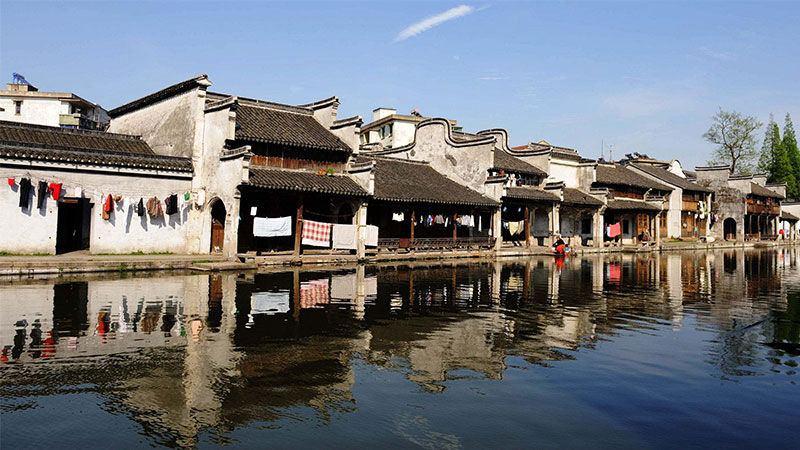Post At 2017-12-12 08:52:06
Nanxun Ancient Town is located in Nanxun District, Huzhou City, at the intersection of Jiangsu, Zhejiang and Shanghai. During the Ming and Qing Dynasties, Nanxun was a prominent silk town in south China, with abundant cultural resources as well as a harmonious combination of Chinese and Western architecture. Nanxun Water Town Scenic Area has an area of 34.27 square kilometers. Its conservation area stretches from the east end of Yiyuan to the west end of Yong An Street. Jia Ye library and the Little Lotus Garden lie on its southern side, while Baijianlou, or the Mansion of 100 rooms, is at the northernmost point. The conservation area is about 168 hectares, of which 88 acres have been specified as key protected areas.
Tourist attractions are divided into three blocks. The first block is where Nanxun’s tourist attractions are concentrated, including the former residence of Zhang Shiming and Liu’s Family Compound etc. The second block consists of scenic spots located in the middle of the township such as the Little Lotus Garden, Jia Ye Library and Wen Garden etc. The third block is the northeastern area where the main highlights are the former residence of Zhang Jingjiang and Baijianlou.
Also hailed the "cultural state" and the "hometown of poems and books", Nanxun Ancient Town has produced several famous people, such as Zhang Jingjiang (a political figure and financial entrepreneur in the Republic of China), Zhang Shiming (one of the founders of Xiling Seal Club) and Xu Chi (renowned poet and essayist) etc. In June 2001, the Former Zhang Residence was included in the fifth batch of “Important Historical Monuments under Special Preservation”. In 2005, Nanxun Ancient Town was named in the second batch of Chinese cultural heritage towns and honored as a National 5A Tourist Attraction, the first of which in Huzhou.
Ancient cultural relics such as Hongcheng, Huacheng and Shangshi etc, proved that settlers were already thriving in Nanxun as early as the Neolithic times. Legend has it that Xia Yu stopped the flood and divided the world into 9 provinces, with Nanxun under the jurisdiction of Yangzhou. During the Spring and Autumn and Warring States period, the township had belonged to Wu, Yue and Chu successively. In 333 BC, the state of Chu started building Gu County and Nanxun came under its jurisdiction. In AD 282, the area was known was Wucheng County and the county government was located in the current museum in Nanxun. During the prosperous Song Dynasty, Wucheng County was split and Nanxun came under the jurisdiction of Anxian County. In the first year of the Republic of China (1912), counties in the vicinity were merged to form the Wuxing County.
Nanxun was liberated on May 2, 1949, and the township remained under the jurisdiction of Wuxing County. In September 1993, Huzhou established three work committees in the city, Nanxun and Linghu districts respectively, and Nanxun town became part of Nanxun District. On June 30, 2011, the Huzhou-Nanxun Ancient Town Administrative Committee was formally established under the district government, to steer efforts in the protection, utilization, planning, construction and management of the township. Nanxun Water Town Scenic Area was formally approved as a National 5A Tourist Attraction in July 2015.
